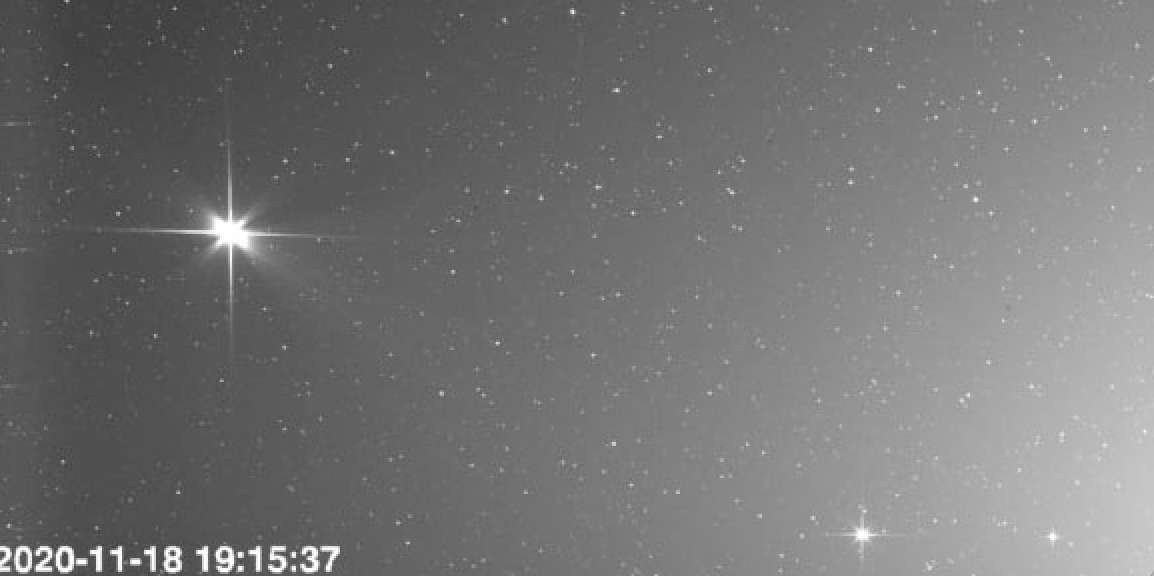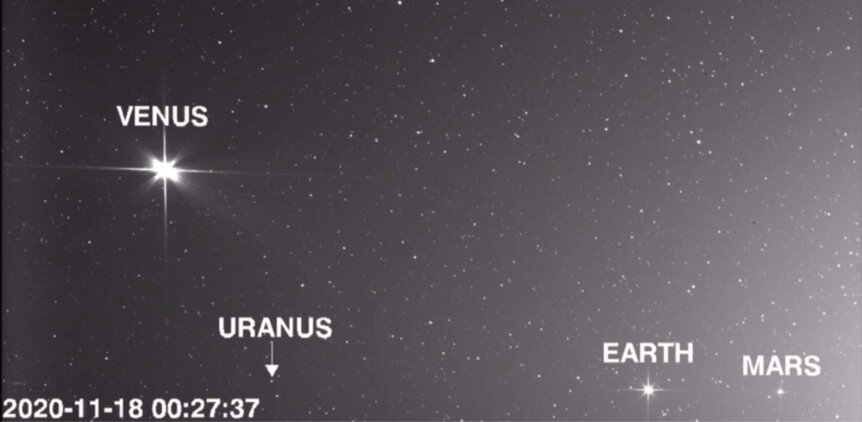Create a free profile to get unlimited access to exclusive videos, sweepstakes, and more!
Journey to the stars as Solar Orbiter captures rare shots of Earth, Mars, Venus, and Uranus all at once

We truly live on the cusp of a remarkable new era of space exploration, with SpaceX rockets rumbling almost every month and international probes spread out around the Milky Way capturing wondrous images of asteroids, comets, planets, moons, and our own shining Sun.
With all the activity and media coverage of these spacecraft and probes, it's easy to become complacent or apathetic towards the data and photos their missions are delivering back to Earth. So let's pause for a moment and gaze into the heavens at these dazzling new pics from NASA/ESA's Solar Orbiter as it traverses our solar system studying our home star.
The new video footage below, pieced together with a series of photos, shows an incredibly rare cosmic tableaux of Earth, Mars, and Venus, with the faint light of Uranus also winking at us from beyond.
These inspiring images were obtained on November 18, 2020 by the SoloHI camera installed aboard Solar Orbiter. Venus (left), Earth (middle), and Mars (right) are clearly visible in the foreground, with a tapestry of bright stars in the background, all captured while the spacecraft loops around the Sun. Eagle-eyed astronomers also noted that Uranus shares the stage near the bottom edge.
“Solar Orbiter is the most complex scientific laboratory ever to have been built to study the Sun and the solar wind, taking images of our star from closer than any spacecraft before,” ESA researchers noted. “The Solar Orbiter Heliospheric Imager (SoloHI) is one of the six remote-sensing instruments onboard the mission. During the cruise phase, these are still being calibrated during specific periods, but are switched off otherwise.”
Venus, Earth, and Mars shift slightly in the SoloHI instrument's field-of-view. Venus is the brightest object seen, hovering roughly 30 million miles away from the Solar Orbiter. When the shots were taken that day, the distance to Earth was 156 million miles and 206 million miles to Mars. Far off Uranus is a mere dot located beside the official time code.
“At the moment of the recording, Solar Orbiter was on its way to Venus for its first gravity assist flyby, which happened on December 27,” ESA scientists explained. “Venus and Earth flybys will bring the spacecraft closer to the Sun and tilt its orbit in order to observe our star from different perspectives.”



























